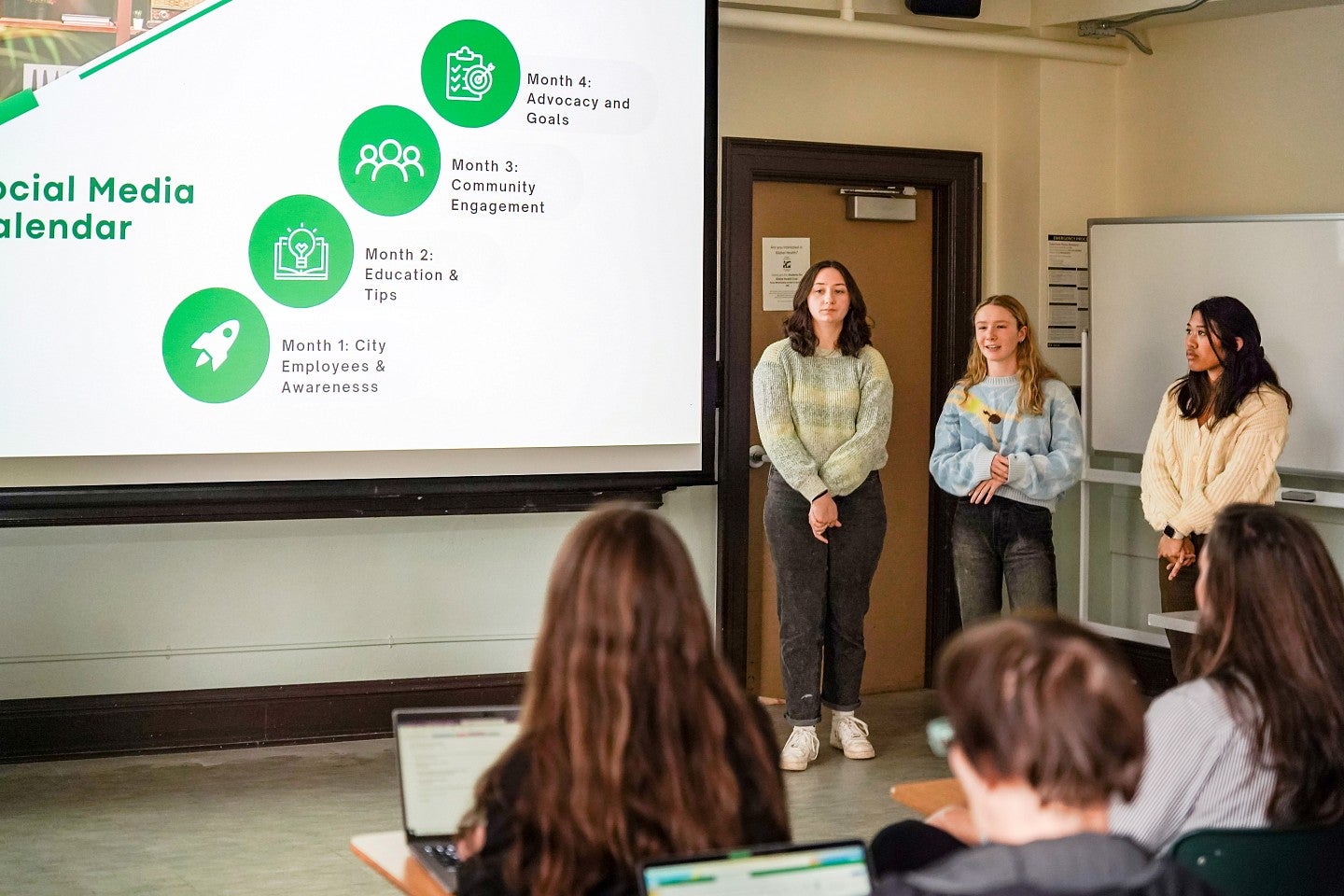
Fostering meaningful connections is a big part of what it means to be human — and a key element in the School of Journalism and Communication’s (SOJC) public relations (PR) undergraduate and strategic communication graduate programs. This foundation of relationship building is timeless and serves as the bedrock upon which school’s PR curriculum and practice are crafted.
The goal of the SOJC’s public relations undergraduate major, Strategic Communication Master’s and Immersive Media Communication Master’s is to provide students with a strong foundation in strategy and application so they are prepared to enter or advance in an industry characterized by building relationships. With a catalog of undergrad classes centered around communication fundamentals, group work, real-world client partnerships, emerging technologies and mentorship, PR faculty prepare students for working in an ever-changing field. And students in the master’s programs learn from working professionals how to apply high-level strategic thinking and proven communication skills to the use of emerging technologies, platforms and approaches so they can take on leadership roles in their companies and the industry.
Fundamentals are never lost in PR programs
“I have heard from employers who have said that compared to other programs, UO PR majors come out and hit the ground running,” said Dean Mundy, director of the SOJC’s undergraduate PR program. “They don’t need to be trained in certain things. They are ready to do it, and if they don’t know, they get up to speed very quickly.”
As the only program in Oregon that’s certified by the Public Relations Society of America, the SOJC PR program meets a high caliber of excellence in its courses, resources, professionalism, culture and relationships, always with an eye on clear messaging.
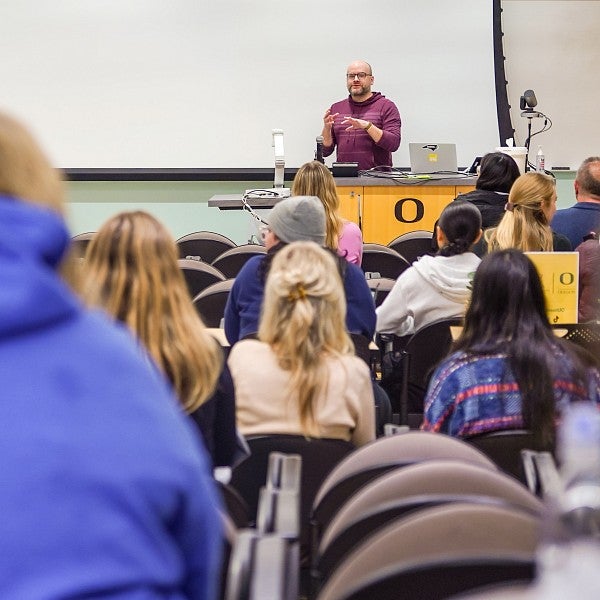
“The number-one skill — and it has been the same forever, and I hope it always will be — is writing,” Mundy said.
Although the industry and communication tools continue to shift to accommodate growing trends like social media and immersive media, the heart of PR and strategic communication has remained the same for many decades. According to Kelli Matthews, senior PR instructor, teaching students to be strong writers, thinkers, strategists, communicators and problem-solvers will serve them as industry professionals regardless of their role and organization.
Ellie Shalvarjian ’22 recently joined the GALE Partners team as an associate focused on influencer relations after beginning her career as a junior associate at Weber Shandwick in the beauty and fashion industry.
Shalvarjian’s strong skill set and confidence in communicating with clients as an entry-level professional surprised many when she entered agency life in New York City.
“I already knew how to draft emails, share presentations and make my voice heard,” she said. “I truly credit that all to the SOJC for giving me the confidence and courage to use these skills before joining the workforce.”
The SOJC also offers a Strategic Communication Master’s degree, directed by professor of practice Attila Schillinger. The program is ideal for PR and communication professionals looking to update their skills, grow their connections and advance in their careers. Students learn strategic communication skills needed to lead in today’s rapidly evolving field from both academic faculty and working professionals.
“Pursuing my master's degree was something that I knew I wanted to do as soon as I graduated college in 2011. After 13 years of professional experience and living in Portland for three years, I knew it was time to get to it,” said Taylor Hiskey ’24, founder of Blaze Social and Digital. “I knew the strategic communication program at the SOJC would provide me with the tools needed to expand my expertise and stretch me in ways that I have been craving for a long time. Plus, the faculty and caliber of resources we have here are unmatched!”
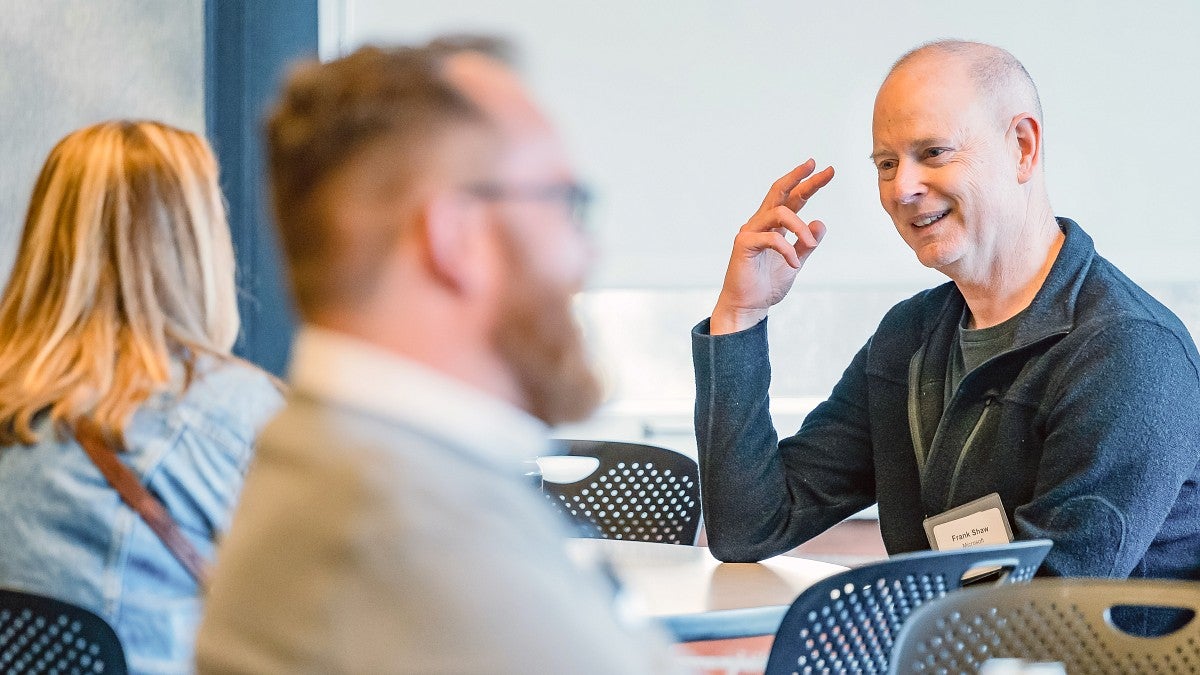
PR skills adapt to the medium
Although the content and tools embedded in the coursework continue to change, the value of the skills acquired only increases as social media and creator strategy grow in popularity in the PR industry.
“The rise of social media has changed the game in terms of making organizations realize the importance of commenting on different issues,” Mundy said. “If you’re going to have a platform, you need to be actively part of the conversation.”
At its core, social media is a reputation tool, allowing brands to create awareness, build loyalty and demonstrate brand equity with a human voice so that followers maintain a positive perception.
“Social media should be social first, and that means understanding your audience,” Matthews said. “Marketing has that capability, but it's focused on moving products. That’s a different approach to a problem, where PR brings in that audience perspective.”
Matthews said nano- and micro-influencers — public figures with fewer than 100,000 followers — are making a big impact for brands. Although smaller followings lessen the size of the audience viewing a campaign, nano- and micro-creators are “powerful and intentional and seen as more genuine,” causing them to receive higher engagement rates than their macro- and mega-influencer counterparts.
As an influencer relations coordinator for the beauty brand Anastasia Beverly Hills, SOJC alum Katherine Pope ’22 fulfills an essential role for the company, which wants to use social media to leverage awareness, revenue and connections. In her role, she creates a direct line from the brand’s marketing strategy to the consumers’ hands by hiring influencers.
She has watched the public relations field transform into a multifaceted industry due to the growing social media and influencer space. As it continues to adapt to new spaces, Pope advises students to remain open to different paths while journeying through their undergraduate career.
“While in the SOJC, there are so many classes, groups and internships that you can join to see what really piques your interests. This is a great time to try new things and pick up new skills you never even thought of,” Pope said.
It has also increased the ways that brands need to respond and interact with their audiences because there are more eyes on them. It breaks down the wall — usually held up by news media and advertising — that often sits between companies and consumers by allowing them to participate in the conversation.
“It’s the responsibility of PR experts to evolve accordingly, staying on the pulse of each new platform and cultural conversation while thinking strategically where an organization must prioritize visibility to connect with each audience segment,” said Grace Hashiguchi ’18, Edelman account supervisor and SOJC public relations alum.
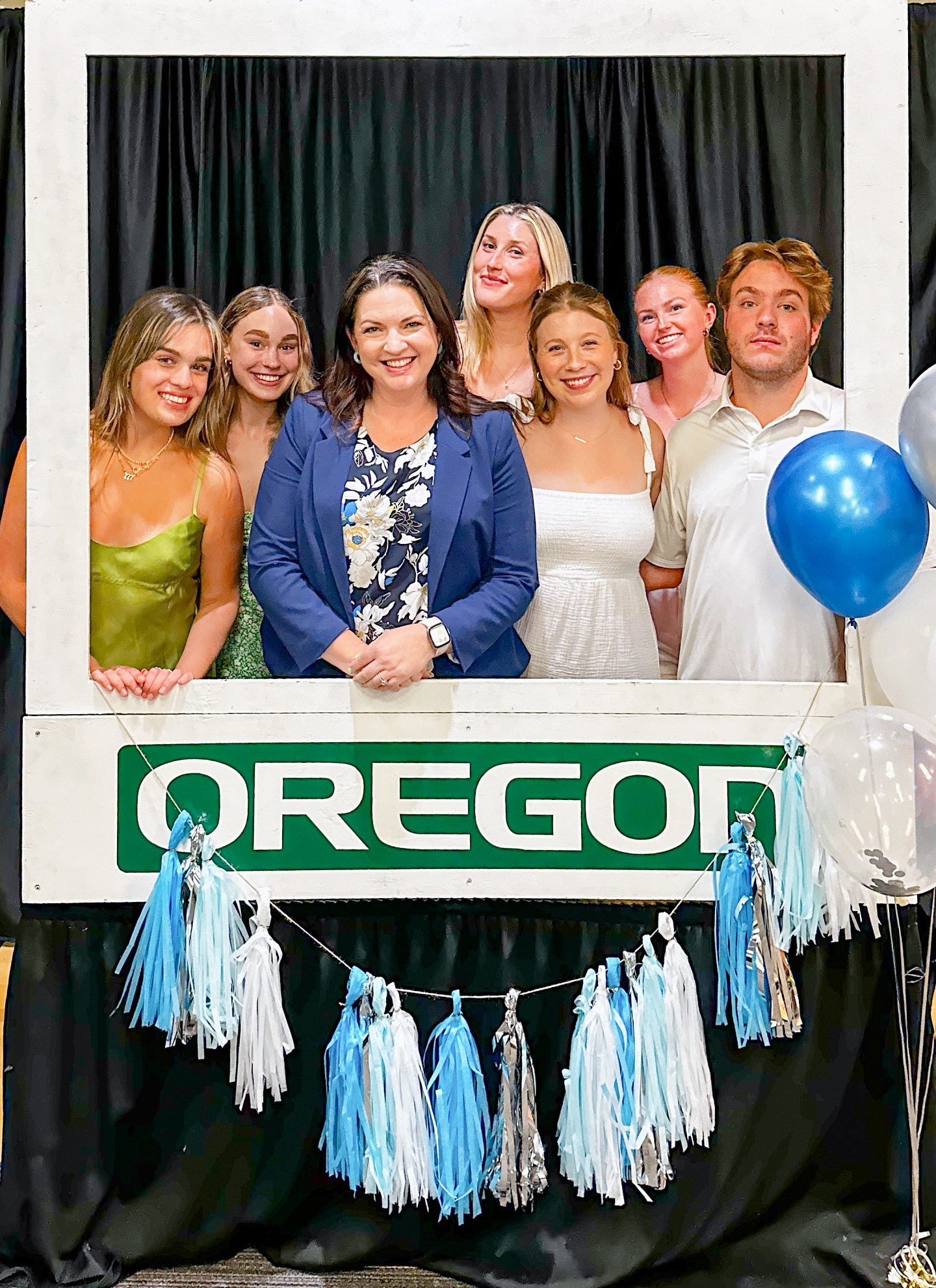
Creating career-ready PR professionals
While the PR program builds a strong foundation of knowledge, the SOJC philosophy is that sending students into the real world to get hands-on experience is what sets them apart.
Many upper-level PR courses like Strategic Planning and Campaigns, and Social Media Strategy, pair groups of students with real-world clients so they can build a foundation in client relationships. The student teams produce client-ready work to accomplish goals and objectives while putting what they learned in previous classes into practice.
Another way the school offers experiential learning is through the nationally affiliated student-run public relations firm Allen Hall Public Relations (AHPR).
Each term, AHPR offers 60 PR students positions in the agency as executive leaders, account supervisors and account executives. They work for a variety of clients on the local and regional levels. This agency experience is invaluable and sets its members up for success when they enter the industry as entry-level professionals.
Alum Daphne Erickson-Martin ’19 is now the senior corporate communications coordinator at Tillamook. As a member of AHPR, she developed social media content, influencer strategies and event relations for an outdoor lifestyle apparel brand.
“The experience I gained through working with a client, collaborating with a team and social media content development allows me to successfully lead Tillamook’s corporate LinkedIn strategy,” Martin said.
According to fourth-year student Julia Johannesen, AHPR is the perfect way for students to get involved in public relations and create work they can put on their resumes.
@oregon.sb Media day BTS👀 more to come!📸#mediaday #oregon #oregonathlete #oregonducks #ducks #oregonathletics #oregonsoftball #softball #photoshoot ♬ Pose (feat. Lil Uzi Vert) - Yo Gotti
The UO Softball team was a client of Allen Hall Public Relations, the School of Journalism and Communication’s nationally affiliated student-run public relations firm. The students assigned to the account created a TikTok account for the softball team, amassing 14,000 followers in the first few months.
In AHPR, Johannessen worked on the UO Softball account. The team wanted to focus on TikTok. She and her team created an account from the ground up, amassing more than 14,000 followers in the first few months, and it was ranked by Skull Sparks as one of the best social media accounts for a softball team.
“It was honestly so great to feel validated in the work that we were doing and being able to put content out there that people could connect to,” Johanneson said. “I would even see comments that were like, ‘Wow, I want to be just like Terra and play softball at UO. I wanna be just like this player.’ So not only getting that validation from fans and future softball players, on the social media side of the work, it felt really great to do that work and know that’s the beginning.”
As part of the hands-on experience in the SOJC, students learn how to build professional relationships. It has served alum Talia Surbrook ’22 well in her role as an account executive at WE Communications, where she bridges the gap between brands and their stakeholders on a global scale, primarily through media relations.
“Public relations specialists rely heavily on relationships with the media and other industry professionals. Understanding who to target, how to capture their attention and getting your message across efficiently is crucial,” Surbrook said.
Hashiguchi said her former instructors and classmates continue to serve as mentors as she moves through her career, and that cultivating connections with clients, the media and cross-functional partners is an invaluable skill in the PR world that she learned in school. Now in the professional world, she recognizes the curiosity and desire of SOJC students to go beyond the basics of coursework.
“Instead of seeing work at face value, Ducks who have taken advantage of a diverse range of projects and leadership opportunities know to approach new challenges with a sense of curiosity that leads to deeper strategic thinking,” Hashiguchi said.
Teaching emerging technology in public relations
Just as social media transformed the communication industry, immersive media like augmented reality (AR) and virtual reality (VR) are altering PR strategies. That’s why it’s so important that PR practitioners remain adaptable and curious about the world around them. It’s also a key driver of the SOJC’s commitment to staying at the forefront of emerging technologies by equipping students with new tools to build better relationships with target audiences.
PR professionals interested in future-leaning communication now have an opportunity to do so with the SOJC’s Immersive Media Communication Master’s program, which students complete online within one year. The program teaches graduates how to build immersive content and use it strategically to communicate about brands, nonprofits, social causes and more.
“The communication industry is at the dawn of an immersive media hiring spree. Companies like Nike, Disney and Gucci are hiring immersive media strategists, Web3 managers and community builders, and chief metaverse officers — job titles that didn’t exist a few years ago,” said Donna Davis, associate professor and director of the master’s program. “This master’s program will prepare you for the communication trends of the future by teaching skills in immersive and experiential marketing strategy, user experience and design, the psychology of immersive media, and content creation for AR, VR and XR platforms.”
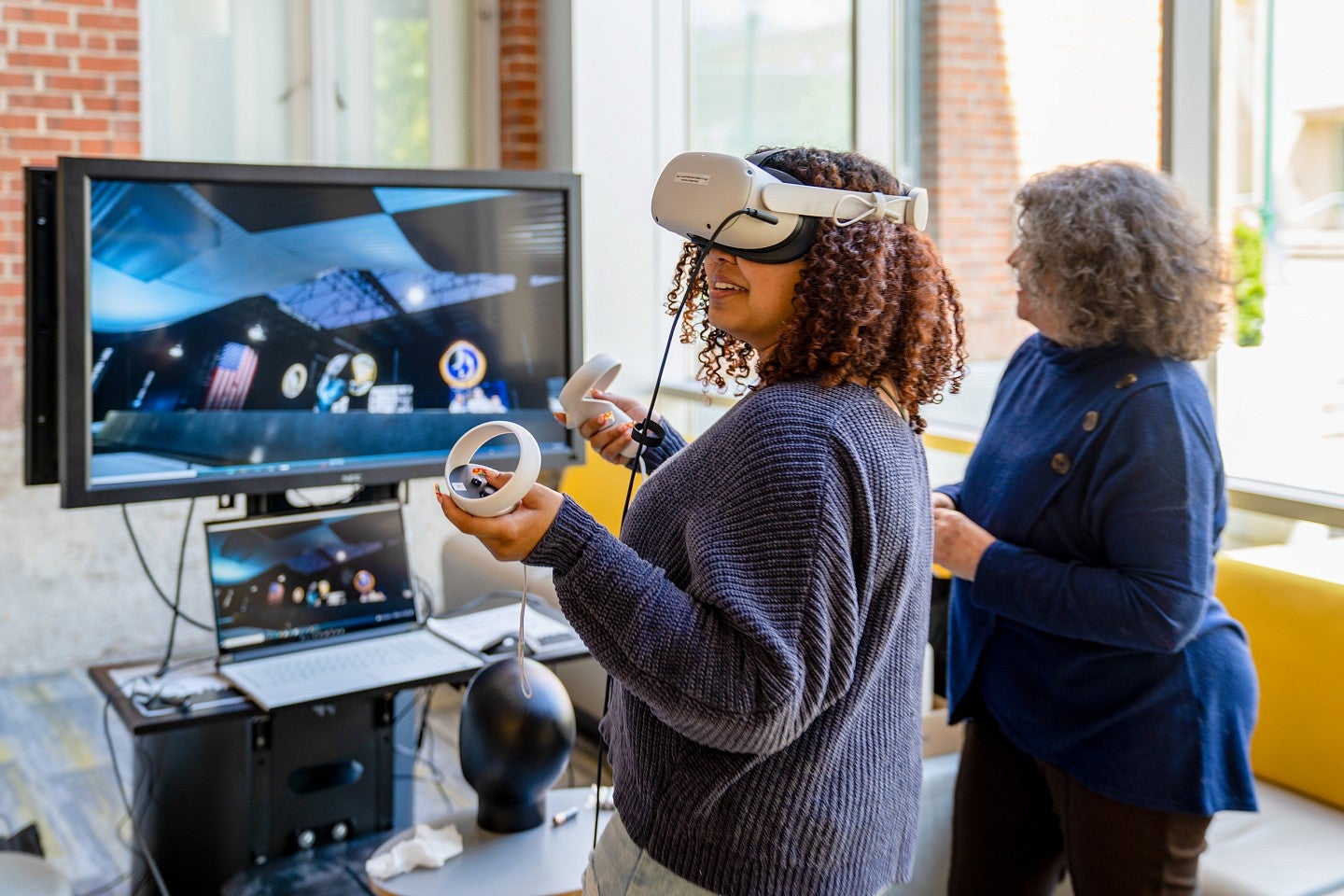
Program faculty Danny Pimentel, Nikki Dunsire and Davis were instrumental in the development of the master’s program and are advocates for advancing skills in immersive media because, as Dunsire puts it, “the technology is coming at us like a bullet train whether we want it to or not.”
Lisa Peyton, who teaches the SOJC’s Immersive and Strategic Communications course to both undergrads and grad students, has received immense support from the school for innovation as she incorporates emerging technologies into her classes. Her New and Emerging Technologies for Strategic Communication, which she calls “XR for PR,” is a 10-week course that takes students through the technologies in their PR skillset like virtual events, VR and AR and concludes with the creation of an immersive strategy to solve a problem for a real-world client.
As Olivia Brodsky ’22 delved further into the public relations program, she decided to take the XR for PR class as one of her electives and found herself fascinated by technology.
“I feel like this course came up at such a good time too,” Brodsky said. “Post-pandemic, a lot of things became more technological, and I feel like there’s been a lot of advancements because everybody sheltered themselves inside and had to find different ways to communicate. But I think it has also advanced our way of communication in very positive ways.”
It's no doubt that on lists of industries set to be disrupted by generative AI, PR is often at the top of the list. Written and visual generative AI tools like ChatGPT, Midjourney and DallE make it easier to write press releases, pitches, social copywriting, media lists and other mainstays of entry-level PR work.
Having led communication teams at Starbucks, Salesforce and Google, SOJC alum Corey duBrowa ’88, who is currently the CEO of the global communications agency Burson Cohn & Wolfe (BCW), has noticed less of a focus on “media relations and a return to public relations” as the industry changes shape.
He feels that AI and immersive media are in the very early stages in terms of impact on the PR industry. During his time at Google, the company was also working with immersive media and beginning to experiment with social media influencers to engage mainstream media.
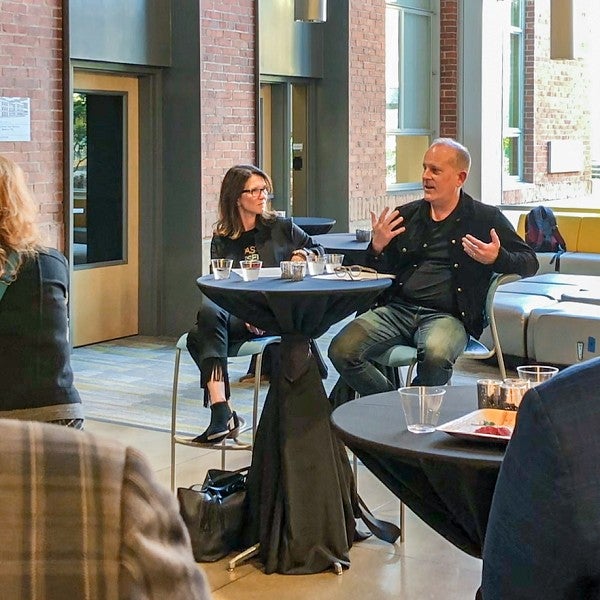
“AI can enhance what humans natively do so well, like create, iterate and ideate, but isn’t particularly well suited to replace what humans do, at least not in PR as we now know it,” duBrowa said.
Peyton agreed with duBrowa when she said that PR practitioners can’t ignore AI tools or view them as detrimental. Instead, they need to learn to use them wisely to increase productivity by outsourcing mundane tasks to machines.
“What can’t be replaced by machines today is the strategy and importance of understanding how to bring a strategic perspective to your work. That’s why I teach strategy to my students as the basis of every class,” Peyton said.
Lauren Howard ’23 also commented on the relevance of Peyton’s XR for PR course, especially with the rise of AI search engines like ChatGPT.
“That class was super cool because Lisa has a lot of knowledge about AR and the different technologies that are applicable to the communications industry when it comes to AI,” Howard said. “One thing that Lisa taught us that I thought was very cool, and also very important, was how to use these tools and how to manipulate them, how to prompt them properly and also how to educate ourselves in order to be in a good position in the job market about these things.”
While some people are concerned about the role AI could play in the communication industry, Brodsky thinks it will just turn more events and jobs remote.
“I was actually talking to someone who has mentored me, and she was talking about how there was a creative aspect in PR and just people themselves, and she compared it to improv acting,” Brodsky said. “It’s basically like you’re just kind of thinking on the fly, everybody has their different creative ideas, and AI can’t do that.”
PR major Katie McKechnie also shared Brodsky’s sentiment that technology like AI will shift the public relations industry, but she thinks the skills she learned through the SOJC won’t become redundant to AI.
“Rather than just teaching us skills or things we should know that are applicable now, they instill core values, like being ethical, storytelling, getting the facts right, looking for the opportunities and being true to yourself,” McKechnie said. “I think even though the PR industry is changing a lot and there’s AI and Gen Z entering the workforce, I think that I’ve learned that PR is not going away. It will always have a role no matter what.”
Mentorship is key to SOJC’s success
Like many first-year students, Brodsky decided to take J-100: Media Professions as a class to fulfill a general education requirement. After being fascinated by the concepts a public relations professional presented, she decided to switch majors to PR. But it was the relationships with her professors that kept her there.
“The professors just genuinely cared about you as an individual,” Brodsky said. “They wanted to help you advance, they wanted to know more about you, and everyone just seemed very social and friendly and helpful. I felt so supported in the SOJC.”
The experience of falling in love with the SOJC PR program through the help of one professor is not unique. PR major Elizabeth Sgro said she felt the program click for her after all the support that she has received from the SOJC.
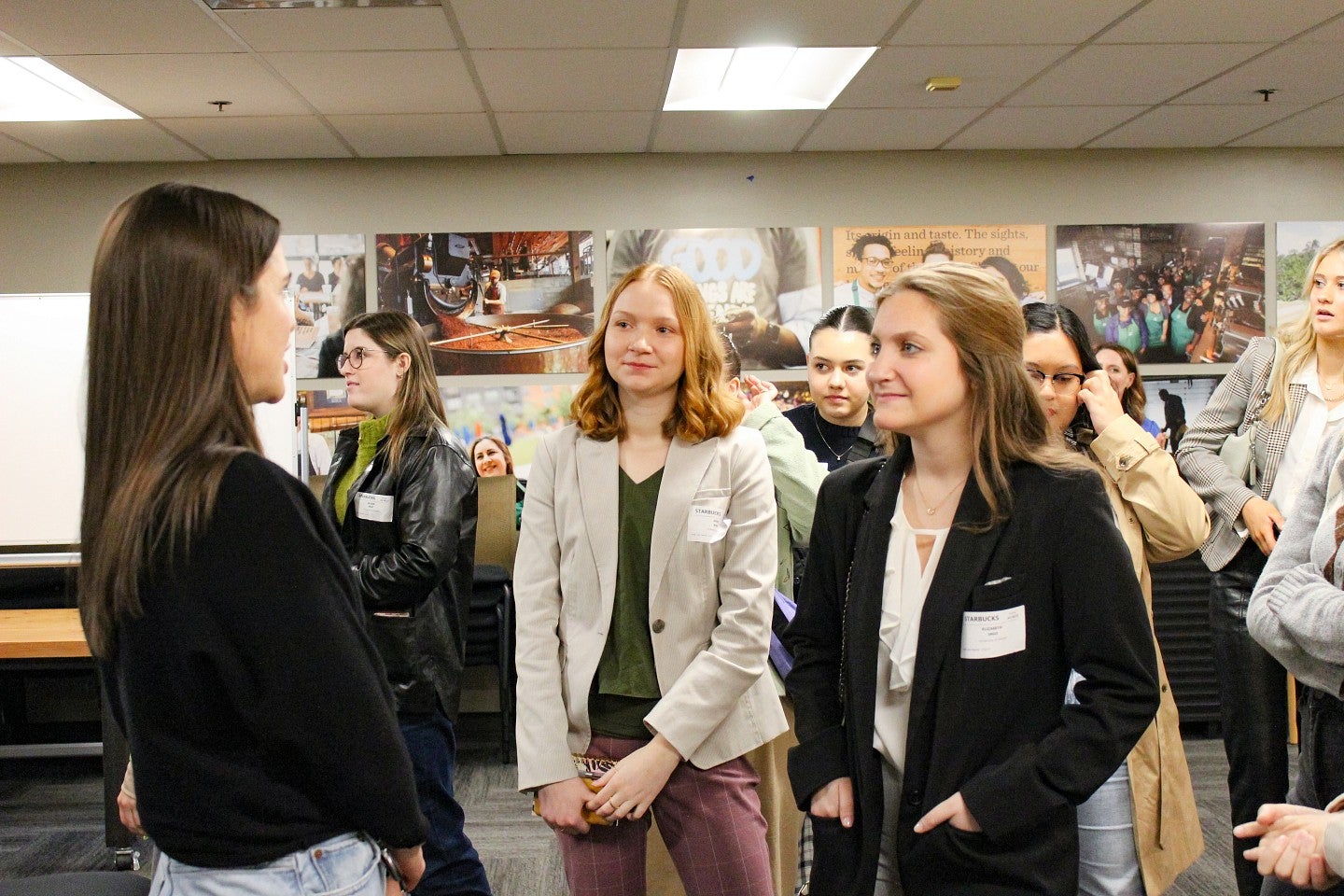
“No matter if it’s an academic advisor or a professor, a dean or whatever, everyone is really approachable if one student needs help and some form of direction,” Sgro said. “With the SOJC, everything has been encouraged, everyone has kind of just been holding my hand, walking me through every step of the way in whatever aspect that I need, and I just really appreciate that, with anyone I talk to.”
Throughout her work with UO’s chapter of the Public Relations Student Society of America (PRSSA), Sgro said she’s been able to connect with several of the guest speakers, who have quelled her anxieties about getting a job later in life. She said she was also reassured when she went on a PRSSA trip to Seattle, where she toured several public relations agencies and companies.
Another public relations organization within the SOJC is IR Futures, a group that focuses on corporate and financial public relations. The group focuses on career-building exercises.
“Talking to real PR professionals, in a setting tailored to my interests, gives me a new perspective on the industry,” PR major Vivian Shepard said. “The speakers explain how they got their first jobs and their involvement as an undergrad, which informs me on the steps I can take before graduation to prepare.”
Shepard thinks that much of her SOJC experience comes from the high-quality care and effort she has received from her professors.
“I am grateful that multiple of my professors have become influential mentors,” Shepard said. “The professors are there for so much more than just class questions. They will give insightful advice about anything PR or career related.”
Setting the standard for PR professionals everywhere
Faculty, alumni and students interviewed for this story pointed to several examples of how the SOJC creates diverse opportunities for PR majors, including exposure to evolving roles such as sports communication and how to put research into action.
To support those interested in sports communication, the SOJC and the Lundquist College of Business partnered to develop Oregon Accelerator. Born out of the National Collegiate Athletics Association’s name, image and likeness policy (NIL), it’s a student-led initiative that allows students to gain hands-on experience helping UO student athletes maximize their NIL opportunities.
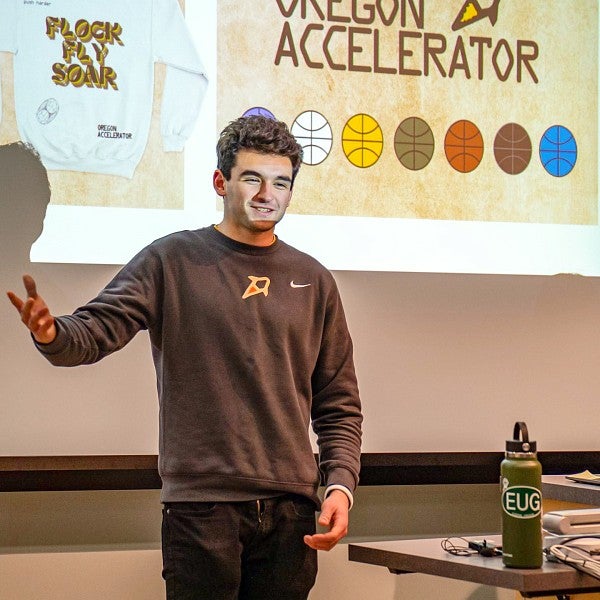
Working through a series of industry connections, the SOJC also partners with the Institute for PR (IPR) and the SOJC to build relationships with PR faculty researchers and employ students to help the organization accomplish its initiatives. IPR, a nonprofit dedicated to research in the PR field that recently opened its West Coast office at the SOJC, aims to bridge the gap between academia and the profession.
Public relations student Lola Tagwerker said working for IPR has shifted her perception of PR, revealing both the creative action part of public relations as well as the research.
“There’s a lot of research that goes on with IPR, so I’ll draft a lot of social for whatever research articles are coming out, just so people know to go check them out,” Tagwerker said. “I just think I wasn’t aware of how much research can go into media.”
As long as the SOJC keeps the focus on fostering meaningful connections in ways that matter for effective communication, SOJC graduates will enter the industry confident that they have the tools to address the communication issues of tomorrow — and knowing the value they bring to the table now.
“There are so many different ways that PR can be defined, especially with social media and how it changed the landscape of PR,” Johanneson said. “I feel like that’s growing more and more, and what it means to be in PR has changed so much, that there are endless possibilities. Overall, I just enjoy how no matter what, you’re always helping someone.”
—By Whitney Conaghan ’23 and Ella Norton, class of ’24
Whitney Conaghan (she/her/hers) graduated from the SOJC in spring 2023 with a bachelor’s degree in public relations and a multimedia minor. She is now a client services partner at dovetail solutions in Denver, Colorado. You can learn more and connect with her on her LinkedIn profile.
Ella Norton (she/her/hers) is a senior majoring in public relations and French from Kansas City, Missouri. She is a copy editor for Align Magazine, an account executive for Allen Hall Public Relations and a student ambassador for the School of Journalism and Communication.
